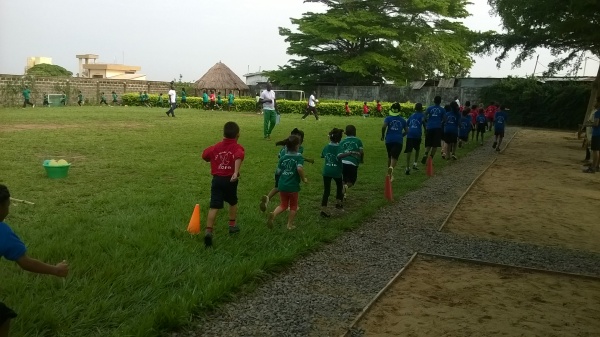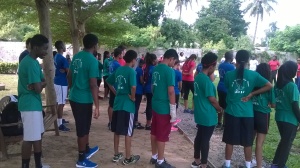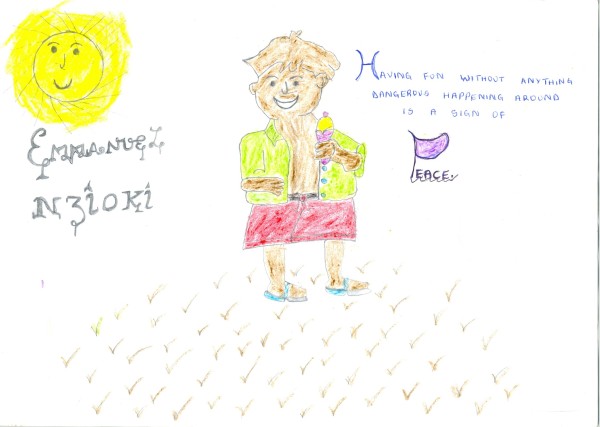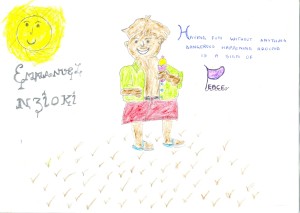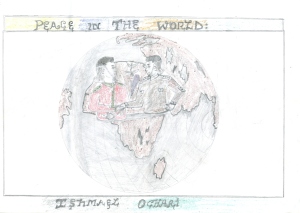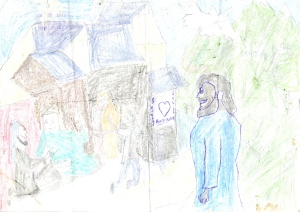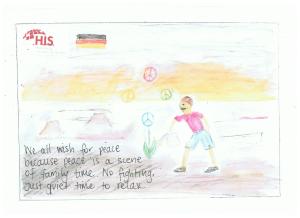 We welcome designs from the Grade 3 class in the H.I.S. Heidelberg International School in Germany. This first picture has been painted by Julian Heisler whose expression for peace involves the planting of peace flowers.
We welcome designs from the Grade 3 class in the H.I.S. Heidelberg International School in Germany. This first picture has been painted by Julian Heisler whose expression for peace involves the planting of peace flowers.
We all wish for peace because peace is a scene of family time. No fighting. Just quiet time to relax.
What was on your mind when you were creating your drawing?
Peace rising above a bombing war zone.
Why do you think peace is important?
Because in war no body wins and people just die. Peace spreads around the world sending friendship and quiet.
The first picture above has been created by Alex and the second jointly by Ella Vielhaber and Isabella Hankins.
Alex wrote: We all wish for peace because everyday lots of people die and we don’t want that.
What was on your mind when you were creating your drawing?
A war being fought with Peace.
Why do you think peace is important?
Because nobody likes dying.
Ella and Isabella say: We all wish for peace because peace is loving, caring and respectful. And we want those things.
What was on your mind when you were creating your drawing?
Hoping that the world will be peaceful.
Why do you think peace is important?
Because everyone could get along and live in one spot without having to move to a different country.
Oliver Mylon and Jennifer Lee wrote: We all wish for peace because everyday thousands and thousands of people in war die. The world is not in peace, not even close.
What was on your mind when you were creating your drawing?
That the real fighter planes would drop out flowers not bombs.
Why do you think peace is important?
Peace could save millions of lives and if the world just keeps getting worse more and more people will die.
Tatsuki Yamamoto who painted the second design above says: We all wish for peace because peace makes us free.
What was on your mind when you were creating your drawing?
Flowers are better than war. Peace is better than war. War is bad and dark.
Why do you think peace is important?
Children can grow up safely. They can go to school. Their future will be good.
Next we have, We love peace. It’s fun! by Ryan Elgihani and Laura Kloeve.
What was on your mind when you were creating your drawing?
A man shooting fireworks and a rainbow over a unicorn.
Why do you think peace is important?
Because peace is good and war is bad.
Amir How and Amir Alberg jointly created the adjoining design. We all wish for peace because we will be helping each other and we will have some relaxing life without any war.
What was on your mind when you were creating your drawing?
That war was a horrible thing.
Why do you think peace is important?
Because if there was no peace the world would be chaos.
Vivienne Cox wrote: We all wish for peace because it will make the world a better place for all living things to live in.
What was on your mind when you were creating your drawing?
Making a war setting with a small amount of peace in it and enough peace to hopefully make a change to someone.
Why do you think peace is important?
Peace is important because no one will get hurt, nothing will get destroyed.
For the next design Evan wrote: We all wish for peace because ones peace comes from inside, it is what shows a person for who they are. This sense is often lost in times of war which is why it is often easy to miss it. So in a larger sense that is why you have to keep it and protect as well as you can. Otherwise the world will become hate and turmoil just as so many countries have been eroded away by it.
What was on your mind when you were creating your drawing?
My picture shows a moral. In war love is most important. But it also shows something else; sometimes technology evolves faster than the time it takes for the world to recover.
Why do you think peace is important?
If peace was something of the past, what do you think would happen? What would we learn was wrong or right? Peace helps us learn whether we need to change something. Without peace we would not evolve or adapt, we would be the same always.
The above design has been painted by May whose quote reads: We all wish for peace so we don’t kill each other.
What was on your mind when you were creating your drawing?
So we can live in peace.
Why do you think peace is important?
So we can have lots of plants and trees for air.
The final piece of art has been done by Christopher who wrote:We all wish for peace because war can kill us.
What was on your mind when you were creating your drawing?
How hard it is to keep peace.
Why do you think peace is important?
Living creatures everywhere can live happily.
A massive thank you to Prudence Boulter, Grade 3 Classroom Teacher and to all of the children in Class 3 for their lovely artistic paintings. Additional thanks to Allyn Raw, Deputy Director, Primary School Principal for coordinating the 2016 project for Germany.

German Flag Meaning:
The colours black, red and gold have been associated with Germany since the middle ages, but the current German flag colours are traced back to early 19th century volunteers, who fought for the country in the Napoleonic wars. The colours are based on the soldiers’ uniforms which were black coats with red braid and gold buttons.
The colours of the German flag now represent the unification of Germany.


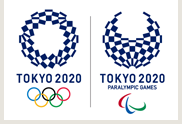
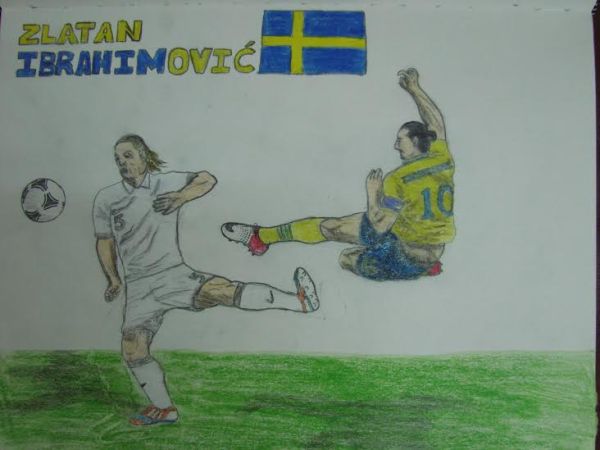




















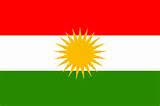
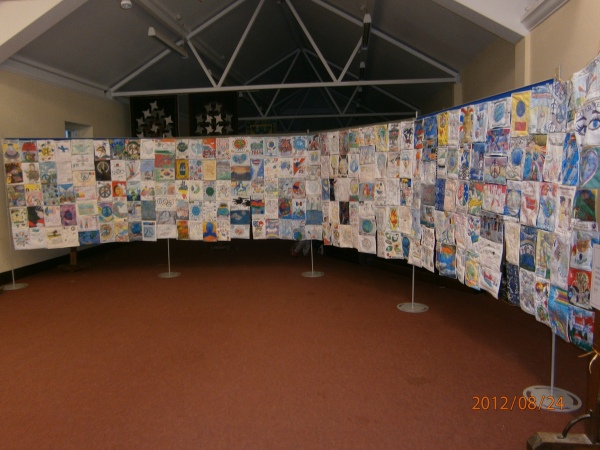
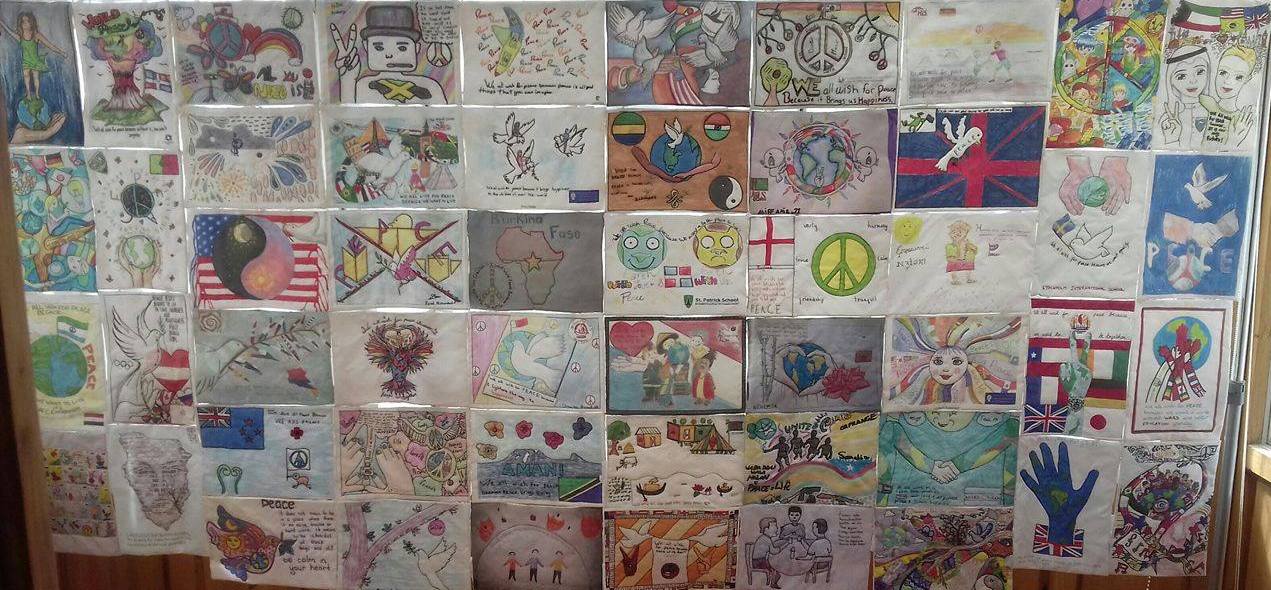


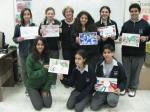

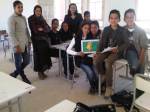













![peace%20008[1] Abraham Moss Community School](https://peacequilt.files.wordpress.com/2011/07/peace200081.jpg?w=130&resize=130%2C173#038;h=173)
![peace%20007[1] UK Exhibition](https://peacequilt.files.wordpress.com/2011/07/peace2000712.jpg?w=130&resize=130%2C172#038;h=172)
![peace%20006[1] UK Exhibition](https://peacequilt.files.wordpress.com/2011/07/peace2000611.jpg?w=129&resize=129%2C173#038;h=173)
![peace%20005[1] Abraham Moss Community School,UK](https://peacequilt.files.wordpress.com/2011/07/peace2000511.jpg?w=129&resize=129%2C172#038;h=172)




















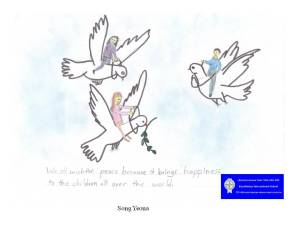
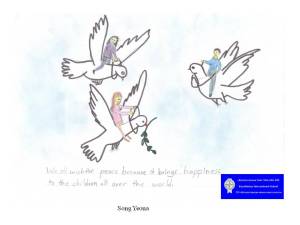

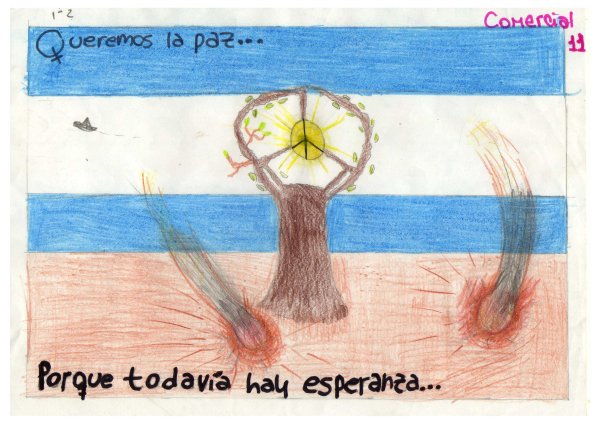
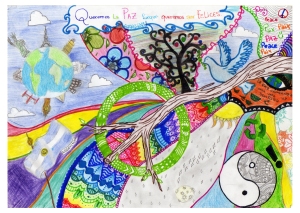






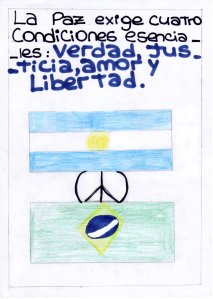

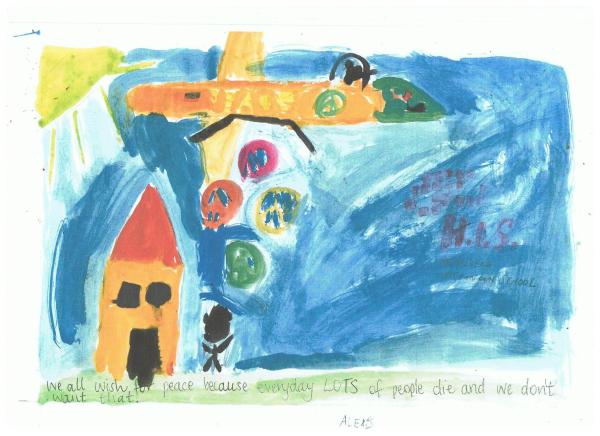












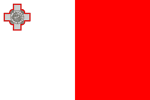

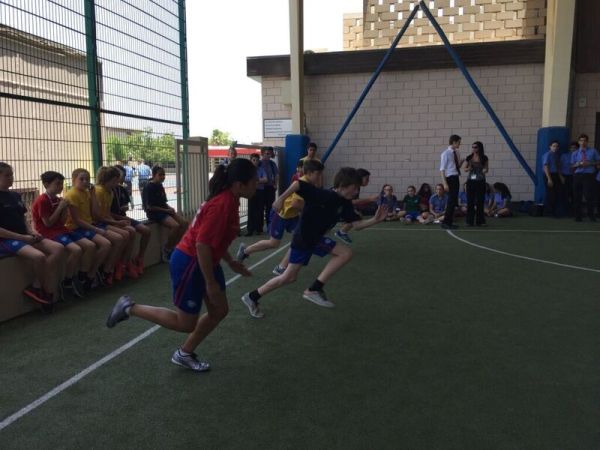
 As part of the House Sports Week, our Senior School students supported the Stride for Truce 2016 initiative on Thursday 16 June. The aim of this event was to mobilise young people all over the world for the promotion of the Olympic ideals of building a better and more peaceful world.
As part of the House Sports Week, our Senior School students supported the Stride for Truce 2016 initiative on Thursday 16 June. The aim of this event was to mobilise young people all over the world for the promotion of the Olympic ideals of building a better and more peaceful world. 










